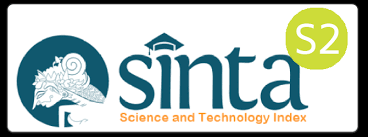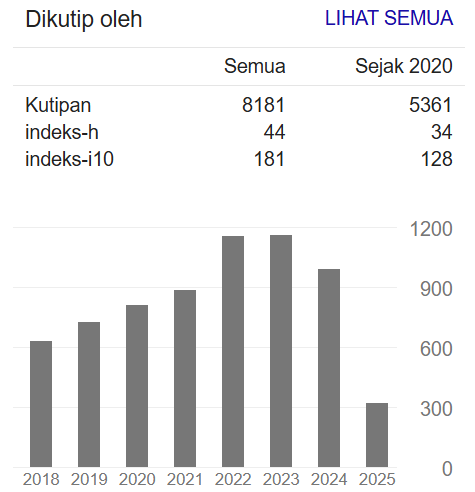THE EFFECTIVENESS OF TRIPLE EXERCISES ON IMPROVING SWALLOWING ABILITY IN NON-HEMORRHAGIC STROKE PATIENTS WITH DISFAGIA
DOI:
https://doi.org/10.34011/jmp2k.v35i3.3194Keywords:
latihan menelan, rehabilitasi disfagia, stroke non hemoragikAbstract
Penyakit stroke merupakan penyebab utama kematian dan disabilitas global akibat gangguan peredaran darah ke otak, dengan disfagia sebagai komplikasi utama. Disfagia menyebabkan kesulitan menelan yang meningkatkan risiko aspirasi pneumonia, malnutrisi, dan dehidrasi. Penelitian ini bertujuan untuk menganalisis efektivitas kombinasi latihan menelan Triple exercises EMSE (Effortful swallow, Mendelsohn manuever, Shaker exercises) dibandingkan intervensi tunggal dan kelompok kontrol terhadap kemampuan menelan pada pasien stroke non-hemoragik (SNH) dengan disfagia. Penelitian ini dilakukan pada bulan September – November 2024 di RSUD dr. R. Soedjono Selong, menggunakan desain eksperimen pretest-posttest dengan kelompok kontrol. Jumlah sampel sebanyak 40 pasien yang diambil secara simple random sampling. Jenis stroke diukur dengan Sistem Scoring Stroke Dave & Djunaidi (SSSDD) yang divalidasi dengan hasil CT-scan, Derajat stroke diukur dengan kriteria NIHSS dan kemampuan menelan dinilai dengan skala GUSS. Analisa data menggunakan Paired T-Test dan Independent T-Test. Hasil menunjukkan bahwa latihan kombinasi triple exercises EMSE secara signifikan meningkatkan kemampuan menelan dibandingkan intervensi tunggal dan kontrol (ρ < 0,05), meskipun tidak ditemukan perbedaaan rata-rata yang signifikan antara kombinasi dan intervensi tunggal (p > 0,05). Latihan kombinasi memiliki efektivitas lebih tinggi dengan effect size yang kuat sebesar 1,43. Kesimpulannya, latihan menelan kombinasi Triple exercises EMSE efektif meningkatkan kemampuan menelan pasien SNH dengan disfagia, mempercepat pemulihan dan mengurangi komplikasi seperti aspirasi dan malnutrisi. Latihan ini direkomendasikan untuk diintegrasikan dalam standar perawatan pasien stroke dengan disfagia.
References
C. W. Tsao et al., “Heart Disease and Stroke Statistics-2022 Update: A Report from the American Heart Association,” Circulation, vol. 145, no. 8, pp. E153–E639, 2022, doi: 10.1161/CIR.0000000000001052.
Kemenkes RI, “Hasil Riset Kesehatan Dasar Tahun 2018,” Kementrian Kesehatan RI, 2018. https://kesmas.kemkes.go.id/assets/upload/dir_519d41d8cd98f00/files/Hasil-riskesdas-2018_1274.pdf
RSUD dr. R. Soedjono Selong, “Data Pasien Stroke Ruang Saraf Tahun 2023 RSUD dr. R. Soedjono Selong,” Lombok Timur, 2023.
S. Farpour, M. Asadi-Shekaari, A. Borhani Haghighi, and H. R. Farpour, “Improving Swallowing Function and Ability in Post Stroke Dysphagia: A Randomized Clinical Trial,” Dysphagia, vol. 38, no. 1, pp. 330–339, 2023, doi: 10.1007/s00455-022-10470-0.
M. C. Feng et al., “The Mortality and the Risk of Aspiration Pneumonia Related with Dysphagia in Stroke Patients,” J. Stroke Cerebrovasc. Dis., vol. 28, no. 5, pp. 1381–1387, 2019, doi: 10.1016/j.jstrokecerebrovasdis.2019.02.011.
J. Choy, F. Pourkazemi, C. Anderson, and H. Bogaardt, “Dosages of swallowing exercises in stroke rehabilitation: a systematic review,” Eur. Arch. Oto-Rhino-Laryngology, vol. 280, no. 3, pp. 1017–1045, 2023, doi: 10.1007/s00405-022-07735-7.
Yuhyen, Agianto, and R. Agistina, “Peningkatan Fungsi Menelan dengan Latihan Menelan pada Pasien Stroke yang Mengalami Disfagia,” J. Penelit. Kesehat. Suara Forikes, vol. 13, no. 4, pp. 878–885, 2022, doi: http://dx.doi.org/10.33846/sf.v13i4.1951.
E. B. McCarty and T. N. Chao, “Dysphagia and Swallowing Disorders,” Med. Clin. North Am., vol. 105, no. 5, pp. 939–954, 2021, doi: 10.1016/j.mcna.2021.05.013.
Author, “Transkrip Hasil Wawancara Informan dalam Studi Pendahuluan. Sumber data primer,” Kabupaten Lombok Timur, 2023.
Prabowo; Arwani; Widiyanto, Panduan Rehabilitasi Disfagia; Pendekatan Klinis dan Latihan Menelan Triple Exercises, Pertama. Kota Banjarnegara: PT. Penerbit Qriset Indonesia, 2025.
D. G. Umbas, “Dave and Djoenaidi Stroke Scoring System Application (DDSSS) to Distinguish Hemorrhagic Stroke and Ischemic Stroke,” Cdk Cermin Dunia Kedokt., vol. 42, no. 9, pp. 647–652, 2015, doi: https://dx.doi.org/10.55175/cdk.v42i9.966.
E. J. Roth, “NIH Stroke Scale,” Encycl. Clin. Neuropsychol., pp. 2457–2458, 2018, doi: 10.1007/978-3-319-57111-9_2193.
K. D. Park, T. H. Kim, and S. H. Lee, “The Gugging Swallowing Screen in dysphagia screening for patients with stroke: A systematic review,” Int. J. Nurs. Stud., vol. 107, 2020, doi: 10.1016/j.ijnurstu.2020.103588.
H. H. Kim and J. S. Park, “Effects of effortful swallowing against kinesiology taping resistance on the swallowing function in patients with poststroke dysphagia: A randomized controlled trial,” Med. (United States), vol. 103, no. 21, p. E38344, 2024, doi: 10.1097/MD.0000000000038344.
J. Zhang et al., “Effect of the Mendelsohn maneuver and swallowing training in patients with senile vascular dementia complicated with dysphagia,” J. Int. Med. Res., vol. 49, no. 5, 2021, doi: 10.1177/03000605211013198.
A. Abouelezz, Z., Mohammed, E., Ahmed, H., El Reheem, “Effect of Shaker’s Swallowing Exercises on Swallowing Ability among Dysphagic Patients with Cerebrovascular Accident,” Egypt. J. Heal. Care, vol. 11, no. 1, pp. 1153–1169, 2020, [Online]. Available: https://ejhc.journals.ekb.eg/article_247638_4e278cedc1f22686aa81e3ff6895cbcd.pdf
Gillette H, “What happens during the subacute phase of stroke ?,” Medical News Town, United states, 2023. Available: https://www.medicalnewstoday.com/articles/subacute-stroke#when-is-the-subacute-phase.
A. Gomes, “Swallowing Exercises,” Toronto, 2022. [Online]. Available: https://www.uhn.ca/PatientsFamilies/Health_Information/Health_Topics/Pages/brochure.aspx?itemid=118
H. S. Park, D. H. Oh, T. Yoon, and J. S. Park, “Effect of effortful swallowing training on tongue strength and oropharyngeal swallowing function in stroke patients with dysphagia: a double-blind, randomized controlled trial,” Int. J. Lang. Commun. Disord., vol. 54, no. 3, pp. 479–484, 2019, doi: 10.1111/1460-6984.12453.
N. F. Insani, “Manuver Mendelsohn sebagai terapi rehabilitasi pasien disfagia post-stroke,” Wellness Heal. Mag., vol. 2, no. 1, pp. 135–140, 2020, doi: 10.30604/well.75212020.
A. Wastchak, M. Cordell, and M. Beingolea, “Functional Outcomes of EMST and Mendelsohn Maneuver in Patients with Oropharyngeal Dysphagia: Mendelsohn maneuver impact outcomes related to swallowing,” UNC Sch. Med., p. 10, 2020, doi: https://doi.org/10.17615/0wbt-g842.
M. Winandari, F., Ismoyowati, T. Nugraha, C., Wahyuning, L., Rosari, “Efektifitas Shaker Exercise terhadap Disfagia pada Pasien Stroke ; The Integrative Literature Review,” J. Penelit. Kesehat. Suara Forikes, vol. 13, no. April, pp. 290–297, 2022, [Online]. Available: doi: http://dx.doi.org/10.33846/sf13206
M. Rofii, Teori dan Falsafah Keperawatan, Edisi 1. Semarang: Fakultas Kedokteran Universitas Diponegoro, 2021. [Online]. Available: http://eprints.undip.ac.id/83782/1/Teori_dan_Falsafah_Keperawatan_Muhamad_Rofii.pdf
Downloads
Published
How to Cite
Issue
Section
Citation Check
License
Copyright (c) 2025 Rully Hadi Prabowo, Arwani Arwani, Budi Widiyanto

This work is licensed under a Creative Commons Attribution-ShareAlike 4.0 International License.




